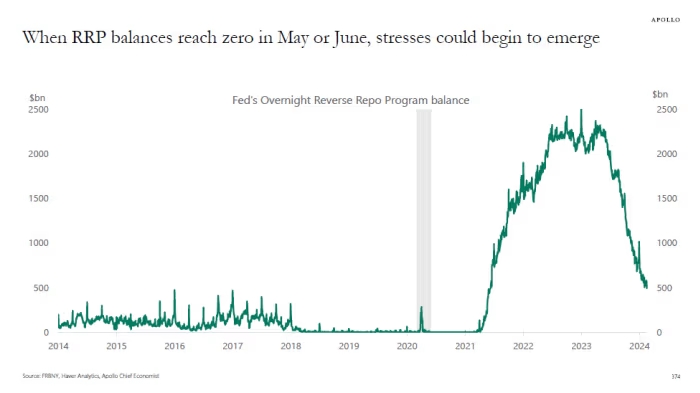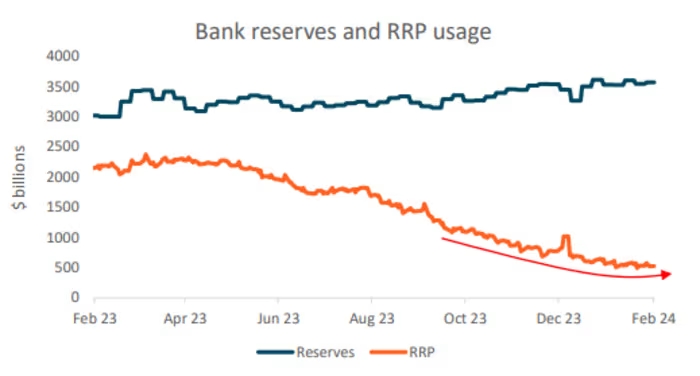Into the Unknown: Traders’ Exploration of an Essential, Yet Little-Known, Financial Realm
Investors are acutely aware of potential shifts brewing in the background over the past 1.5 to 2 years, signaling the possibility of messy adjustments ahead, notes a strategist. While Federal Reserve officials may take months before considering any action on interest rates, traders are directing their attention to the often-overlooked dynamics of funding markets, which are crucial for sustaining confidence in the U.S. banking system.
These markets, particularly the mechanisms like the Federal Reserve’s reverse repurchase facility, play a pivotal role in managing the central bank’s main policy rate target and ensuring the smooth operation of financial markets.
However, concerns are mounting that certain scenarios could trigger disruptions akin to those witnessed in September 2019, when volatility rattled the overnight funding market due to a sharp decline in bank reserves.

Economist Derek Tang underscores the challenges faced by Fed officials during such episodes, highlighting the uncertainty surrounding the effectiveness of their measures in mitigating risks.
Presently, the usage of the reverse-repo facility is on the decline, raising apprehensions that a complete cessation could lead to a shortage of reserves in the banking sector, echoing the events preceding the collapse of Silicon Valley Bank.
Despite these concerns, funding markets have exhibited resilience this year, with no indications of strain comparable to those seen in late 2023. With ample bank reserves intact, the Fed retains the flexibility to continue its quantitative tightening efforts, though worries persist regarding potential disruptions once reverse repo usage hits zero.
The concentration of these issues on the Fed’s balance sheet is capturing market attention, with many fearing a period of calm before a storm. Tang suggests that while the Fed may not be adjusting interest rates, the focus on these matters in 2024 aligns with expectations for a reevaluation of balance-sheet plans.

While some policymakers have earmarked March for discussions on adjusting the pace of quantitative tightening, analyst John Velis questions the urgency, pointing to the current stability in funding markets and policy uncertainty delaying rate cut expectations.
Nonetheless, developments in various market indicators, including Treasury prices and yields, underscore the evolving landscape that investors are monitoring closely.




